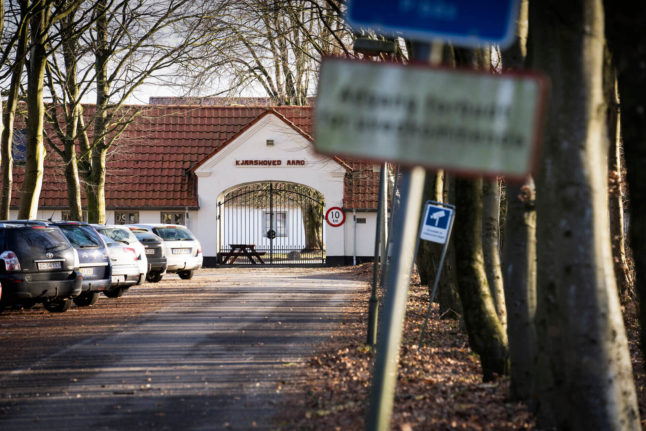The Ministry of Immigration and Integration recently announced that a group of single women will be relocated from the Kærshovedgård departure centre to another departure centre, Avnstrup.
The decision was made partly to “address reports of episodes where women have been subjected to harassment and unwanted sexual contact at Kærshovedgård”, the ministry said in a statement at the time.
But the Danish Immigration Service told newswire Ritzau on Friday that it will take around two months before the women can be moved.
A decision must be made on whether facilities at Avnstrup must be adapted to be able to accommodate the women there, the agency said.
Some 18 reports of sexual harassment have been filed at Kærshovedgård since 2016, according to Ritzau. All but one of the reports were also filed with police, the agency said.
READ ALSO: Danish research reveals strain on refugees since country’s ‘paradigm shift’
The numbers do not necessarily only relate to incidents targeting women and there is variation in their character and severity, the Immigration Service also noted.
Avnstrup, which is operated by the Danish Red Cross on behalf of the Danish Immigration Service, is staffed around the clock and primarily accommodates families including children who do not have the legal right to reside in Denmark.
The Kærshovedgård facility is operated by the Danish prison service, Kriminalforsorgen. It is one of two deportation centres in Denmark used to house rejected male and female asylum seekers who have not agreed to voluntary return, as well as persons with so-called ‘tolerated stay’ (tålt ophold) status.
This includes people who have not committed crimes but have no legal right to stay in Denmark, for example due to a rejected asylum claim; as well as foreign nationals with criminal records who have served their sentences but are awaiting deportation.
The residents do not have permission to reside in Denmark but many cannot be forcibly deported because Denmark has no diplomatic relations or return agreements with their home countries.
A longstanding expulsion facility in operation since 2016, Kærshovedgård has recently received renewed media attention in Denmark after a film highlighted the plight of rejected asylum seekers trapped at the centre.
It first became prominent in the mid-2010s, when it received criticism for imposing conditions that could lead to mental illnesses in residents. Around 250 people currently live there.
READ ALSO: ‘Unbearable’: New film reveals life at Denmark’s controversial deportation centre
Media in Denmark have in recent months reported numerous instances of problems at the facility, which is located 13 kilometres from Ikast in Jutland.
Five residents were charged in August 2023 for possession and sale of narcotics.
During a raid on the centre in November, police found cannabis, a taser, an illegal switchblade knife and counterfeit Euro banknotes.
Later the same week, a resident was charged and detained by police for endangering others after allegedly firing a shot inside a room at the centre, police said.



 Please whitelist us to continue reading.
Please whitelist us to continue reading.
Member comments